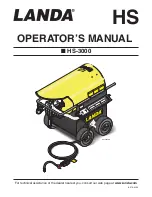
23
PREPARATION OF THE WASHING
Sort the laundry
1.
Sort the laundry according to…
• Type of fabric / care label symbol
Cottons, mixed fibres, easy care/synthetics,
wool, handwashed items.
• Colour
Separate whites and coloureds. Wash new
coloured items separately.
• Size
Wash items of different sizes in the same load to
improve efficiency and distribution in the drum.
• Fabric delicacy
Wash delicate articles separately: use a special
programme for Pure New Wool
, curtains and
other delicates. Always remove curtain glides or
wash curtains with the glides inside a cotton
bag. Use the special program for handwash
fabrics. Wash stockings, belts and other small
items or articles with hooks (e.g. bras) in special
cotton bags for washing machines or in zipped
pillow cases.
2. Empty pockets
Coins, safety pins and similar items can damage
of your appliance drum and tub.
3. Fasteners
Close zips and fasten buttons or hooks; loose
belts or ribbons should be tied together.
Stain removal
•
Blood, milk, egg and other organic substances
are generally removed by the enzyme phase of
the programme.
•
To remove red wine, coffee, tea, grass and fruit
stains etc. add a stain removing agent in
detergent dispenser compartment
or
chlorine bleach in compartment
(depending
on model).
•
Particularly stubborn stains should be treated
before the wash.
Dyeing and bleaching
Products usually consist of dye colour, fixing agent
and salt. Pour the dye colour, the fixing agent and
then the salt directly into the empty drum. Load
the laundry only afterwards.
•
Only use dyes and bleaches recommended for
washing machines.
•
Follow the manufacturer’s instructions.
•
Plastic and rubber parts of the machine may be
stained by dyes or bleaches.
Loading the laundry
1.
Open the door.
2.
Unfold the laundry and place it loosely in the
drum. Follow loads recommended in the
programme chart: Overloading will result in
unsatisfactory washing results and creased
laundry.
3.
Close the door.
DETERGENTS AND ADDITIVES
Choice of the right detergent and additives
The type of detergent depends on:
•
type of fabric (cottons, easy care/synthetics,
delicate items, wool).
Note:
use only specific detergents for wool.
•
colour;
•
washing temperature;
•
degree and type of soiling.
Notes:
Whitish residues on dark fabrics are caused by
insoluble detergents components used in modern
phosphate-free powder detergents. If you notice
this problem, shake or brush the affected items or
use a liquid detergent.
Keep detergents and additives in a dry place and
out of reach of children.
Use only detergents and additives specifically
produced for domestic washing machines.
If you use descaling agents, dyes or bleaches,
make sure they are suitable for washing machine
use. Descaler could contain components that can
attack parts of your washing machine.
Do not use solvents (turpentine, benzine, etc.).
Do not machine wash fabrics that have been
treated with solvents or flammable liquids.
3gb05112.fm5 Page 23 Tuesday, November 21, 2000 4:36 PM
Black Process Plate
Summary of Contents for AWM 6120
Page 4: ... ...








































